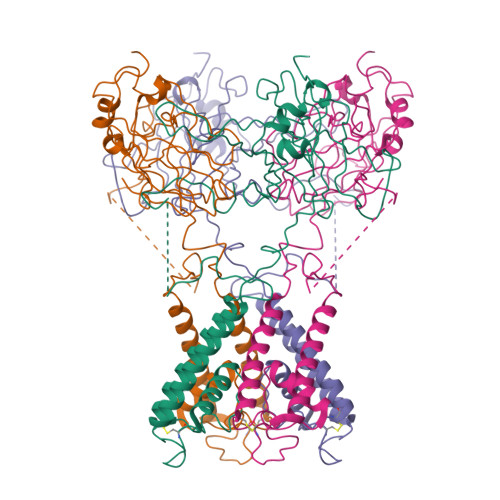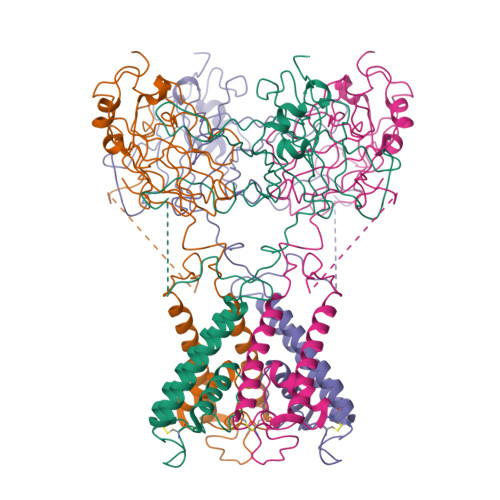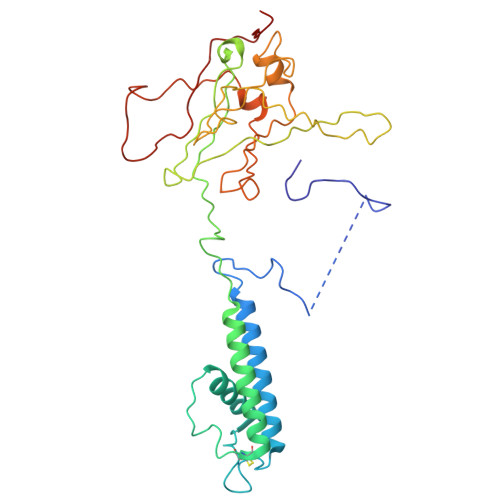Biochemical, biophysical, and structural investigations of two mutants (C154Y and R312H) of the human Kir2.1 channel involved in the Andersen-Tawil syndrome.
Zuniga, D., Zoumpoulakis, A., Veloso, R.F., Peverini, L., Shi, S., Pozza, A., Kugler, V., Bonnete, F., Bouceba, T., Wagner, R., Corringer, P.J., Fernandes, C.A.H., Venien-Bryan, C.(2024) FASEB J 38: e70146-e70146
- PubMed: 39520289
- DOI: https://doi.org/10.1096/fj.202401567R
- Primary Citation of Related Structures:
8QQL - PubMed Abstract:
Inwardly rectifying potassium (Kir) channels play a pivotal role in physiology by establishing, maintaining, and regulating the resting membrane potential of the cells, particularly contributing to the cellular repolarization of many excitable cells. Dysfunction in Kir2.1 channels is implicated in several chronic and debilitating human diseases for which there are currently no effective treatments. Specifically, Kir2.1-R312H and Kir2.1-C154Y mutations are associated with Andersen-Tawil syndrome (ATS) in humans. We have investigated the impact of these two mutants in the trafficking of the channel to the cell membrane and function in Xenopus laevis oocytes. Despite both mutations being trafficked to the cell membrane at different extents and capable of binding PIP 2 (phosphatidylinositol-4,5-bisphosphate), the main modulator for channel activity, they resulted in defective channels that do not display K + current, albeit through different molecular mechanisms. Coexpression studies showed that R312H and C154Y are expressed and associated with the WT subunits. While WT subunits could rescue R312H dysfunction, the presence of a unique C154Y subunit disrupts the function of the entire complex, which is a typical feature of mutations with a dominant-negative effect. Molecular dynamics simulations showed that Kir2.1-C154Y mutation induces a loss in the structural plasticity of the selectivity filter, impairing the K + flow. In addition, the cryo-EM structure of the Kir2.1-R312H mutant has been reconstructed. This study identified the molecular mechanisms by which two ATS-causing mutations impact Kir2.1 channel function and provide valuable insights that can guide potential strategies for the development of future therapeutic interventions for ATS.
Organizational Affiliation:
UMR 7590, CNRS, Muséum National d'Histoire Naturelle, IRD, Institut de Minéralogie, Physique des Matériaux et de Cosmochimie, IMPMC, Sorbonne Université, Paris, France.


















